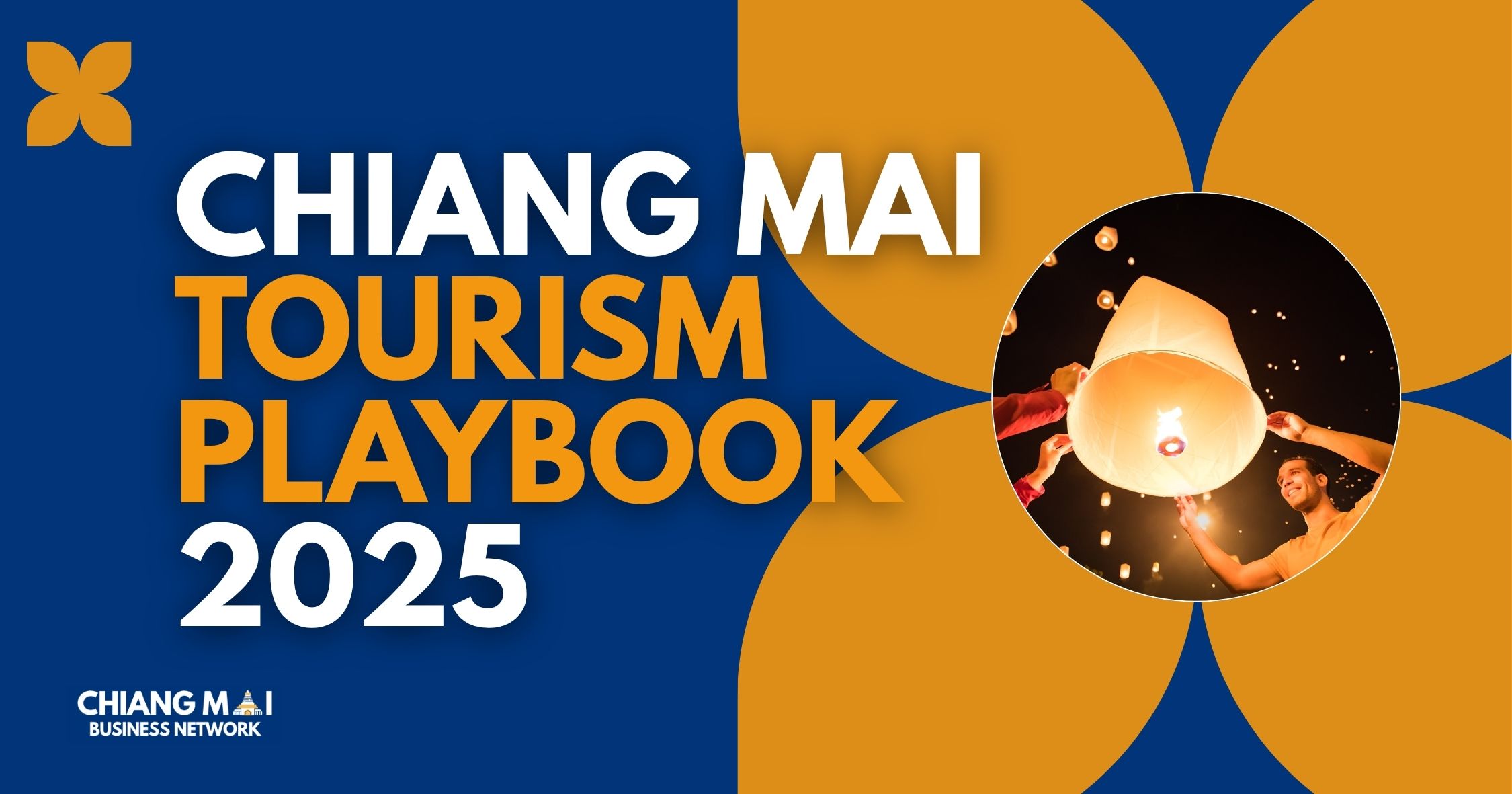Tourism in Chiang Mai is in a moment of transformation. The old playbook — built around mass arrivals, Chinese group tours, and predictable high seasons — no longer applies.
At the recent Travel Link seminar hosted by the Big Data Institute (BDI) and reflecting the perspective of the President of the Chiang Mai Tourism Business Association, six insights stood out that every local business needs to understand.
And this isn’t just about tour operators. Restaurants, cafés, real estate agents, coworking spaces, and professional services firms are all influenced by how Chiang Mai positions itself globally. The city’s new direction has ripple effects across every sector, from coworking spaces to real estate to wellness services.
Here’s the new Chiang Mai Tourism Playbook 2025 — and how your business can adapt.
Play 1: Don’t Rely on China Alone — Diversify Your Markets
Before COVID, Chinese group tours were Chiang Mai’s bread and butter. That dominance has weakened. While China still ranks as the top nationality, its travel structure has shifted: fewer groups, more independent travelers, shorter stays, and lower spending.
At the same time, South Korea and Taiwan are becoming powerful feeder markets, while Middle Eastern travelers are emerging as high-value visitors who stay longer and spend more.
What Businesses Should Do:
- Tailor offers for Korean, Taiwanese, and Middle Eastern visitors.
- Adjust messaging for Chinese tourists who now travel independently.
- Think quality over volume — niche markets may bring fewer visitors, but higher spending.
(Related: Data Insights Are Reshaping Tourism Strategy)
Play 2: Target the Long-Stay Nomad
Chiang Mai’s reputation as a hub for digital nomads and remote workers has never been stronger. These travelers are not weekend tourists. They stay for weeks or months, rent apartments, fill coworking spaces, and keep cafés buzzing.
Chiang Mai fits the bill perfectly: nature, culture, community, affordability, and an international network that makes the city feel “just right.”
What Businesses Should Do:
- Design packages for one- to three-month stays.
- Market not just activities, but lifestyle: health, learning, and local immersion.
- Build partnerships with coworking spaces, language schools, and wellness providers.
(See also: Digital Nomad Destination: Chiang Mai)
Play 3: Push for Better Connectivity
The elephant in the room: air access. Without more direct flights, Chiang Mai’s growth is constrained. Tourists from Europe or the U.S. still must transit through Bangkok, with higher fares turning away mid-market visitors.
Local businesses cannot fix this alone, but they can be part of a collective push.
What Businesses Should Do:
- Share demand data with associations and airlines to demonstrate potential routes.
- Support advocacy campaigns calling for more direct international flights.
- Collaborate regionally — a stronger Chiang Mai hub benefits every sector.
(Related: Why Chiang Mai Is Rising as a MICE Destination)
Play 4: Find Your Niche Season
Chiang Mai is moving from a one-size-fits-all calendar to planning by rhythm. Instead of relying only on Chinese New Year or Yi Peng, the city now aligns events with market-specific peaks:
- July–August → Middle Eastern travelers escaping the heat
- September → Domestic and spiritual tourism niches
- November → International festivals like Yi Peng
What Businesses Should Do:
- Track when different segments arrive and tailor offers accordingly.
- Align marketing campaigns with demand cycles, not just traditional “high season.”
- Explore partnerships around festivals, wellness retreats, or halal events.
(Explore: Chiang Mai Design Week 2025 and International MICE Events)
Play 5: Position Chiang Mai Beyond Tourism
Chiang Mai is more than a holiday destination. It is becoming a “City of Living” — a place for digital nomads, retirees, long-stay wellness seekers, and culturally curious visitors.
This positioning is soft power: it doesn’t need to be invented, only communicated effectively.
What Businesses Should Do:
- Frame Chiang Mai not just as a trip, but as a lifestyle choice.
- Highlight themes like balance, renewal, creativity, and community.
- Build products and services that serve residents and long-stay visitors equally.
(Related reading: Reasons to Start a Business in Chiang Mai)
Play 6: Use Data, Not Guesswork
The old approach of “spray-and-pray” marketing is no longer enough. Tools like Travel Link (BDI) provide granular data: arrivals by nationality, flight origin, and behavior shifts.
The businesses that win will be those that let data guide strategy.
What Businesses Should Do:
- Monitor monthly inbound trends.
- Spot rising demand early and tailor offerings.
- Move away from discounts and toward precision offers that resonate with each audience.
(See: Problem-Solving Mindset Shift Unlocks Sales)
Adaptation is the Advantage
Chiang Mai is not just recovering — it is reinventing. The businesses that adapt quickly will capture new opportunities in a tourism market defined by diversity, rhythm, and lifestyle.
The playbook is clear:
- Diversify markets.
- Target long-stay nomads.
- Push for connectivity.
- Think by season.
- Position Chiang Mai as a city of living.
- Let data guide the way.
Chiang Mai doesn’t need to compete with the beaches of Phuket or Pattaya. Its strength lies in offering something different: a slower, richer, more sustainable experience.
That’s the opportunity for 2025 and beyond.











